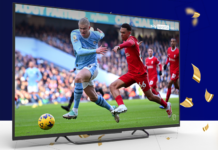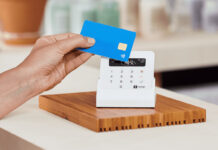A clean and organised back-bar can have a big impact on efficiency

THE back-bar is arguably one of the most important areas in any licensed premises – and one that can have a real impact on the customer experience.
According to back-bar designers and equipment suppliers contacted by SLTN last week, a well-designed and well-organised back-bar can affect the efficiency and overall smooth running of any business.
Sandro Formisano, chairman of bar equipment and design firm New Concept, said operators should always keep an eye out for the ‘next big thing’ in back-bar design, which could make running their outlet easier.
“A refurbishment ought to be done every four to six years; that’s the norm,” he said. “But between that you should be looking at the market and seeing if there’s anything else new you can add in.”
Aside from introducing new equipment, maximising the space you have is key.
“I’ve seen situations where [there are]coffee machines on the right side of the bar and the milk is at the opposite end of the bar,” added Formisano.
“I’ve seen glasswashers underneath coffee machines. That’s not taking advantage of the bar, that’s just making a mess of the bar.
“It’s got to be mechanically worked out that everything’s got its place.”
A well-designed back-bar is about more than convenience, however.
Bill Tripp, key account manager at Innserve, said the set-up of a back-bar area has a much more tangible result.
“Ultimately, poor design and outdated equipment will affect the bottom line,” he said.
“Inefficient design will influence staff efficiency and service, while the impact of out of date equipment will be reflected in inflated energy and maintenance bills.”
Suppliers did, however, concede that selecting the right equipment can be a challenge in itself.
When it comes to glasswashers, for example, Paul Crowley, marketing manager at Winterhalter UK, advised operators to consider one fitted with heat exchangers, which he said help cut down the amount of steam that billows out when the machine is opened.
“By using a fast cycle under-counter glasswasher users ensure that there is no build up of unsightly glasses in the bar area and that customers don’t have to wait to be served because you have run out of glasses,” he said.
“Choose a glasswasher that is easy to operate and that has self diagnostics so it can alert staff when there is a problem. When a machine has easily understandable controls then less mistakes will be made.”
The location of the washer is another key consideration.
“Site a glasswasher at the end of the bar, so staff are not struggling to get past when the door is open, and dirty glasses can be stacked neatly at the end of the bar ready to be loaded,” added Crowley.
Malcolm Harling, sales and marketing director of Williams Refrigeration, highlighted the importance of regular maintenance of equipment like back-bar fridges.
“As with any refrigeration equipment, back-bar coolers need to be cleaned regularly,” he said.
“The door gaskets or seals need to be checked – any damage will affect the power consumption, so replace them right away.
“Get them [fridges] serviced regularly, ideally under a PPM (planned preventive maintenance) contract.”
As with glasswashers, there are a number of factors to consider when choosing a back-bar fridge.
Poor back-bar design and outdated equipment will ultimately affect the bottom line.
Harling said a quality cooler will operate efficiently and maintain its temperature, despite being opened and closed frequently.
“It also has to be robust enough to survive a punishing level of wear and tear,” he added.
And it’s not just fridges and glasswashers that operators have to consider when kitting out the back-bar.
David Watts, senior manager at Samsung Professional Appliances, said microwaves have become an “essential” addition to many back-bars.
“They are easy to operate, cook fast, are energy efficient and don’t take up much space,” he said.
“They don’t produce large quantities of steam, heat or odours so, in most cases, they don’t require much in the way of extraction or ventilation.”
As well as helping to increase efficiency and improve customers’ experiences, back-bar technology can also help give outlets a point of difference, said Mark Hogan, marketing and sales manager at Foodservice Equipment Marketing (FEM).
Hogan argued that equipment like blenders can help operators expand their bar’s offer.
“Speciality drinks such as cocktails and smoothies are high profit earners and blenders are increasingly important pieces of back-bar equipment,” he said.
Image – Operators should ensure back-bars are well maintained and up to date, say equipment suppliers.

























